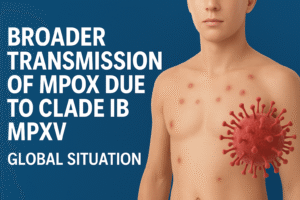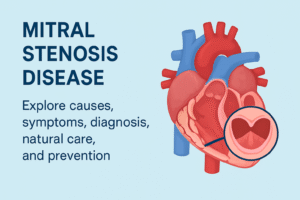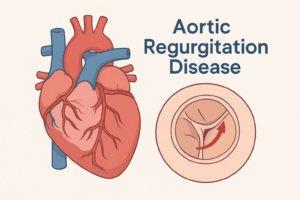Have you ever felt a heaviness that doesn’t lift, even on sunny days? At some point, most of us feel sadness—but depression is more than that. It’s deeper, heavier, and often invisible to the outside world. People may smile, go to work, and carry on, while inside they feel empty.
To help us understand, let’s follow the story of Riya, a young woman who once loved painting but slowly lost the colors of her life. Through her journey, we’ll explore what depression really is, its causes, stages, symptoms, and how it can be treated and prevented—even without medicine.
What Is Depression?
Depression is a mental health condition affecting thoughts, emotions, and behavior. Unlike temporary sadness, depression lingers for weeks, months, or even years. It drains energy, steals interest in hobbies, and can make even daily tasks feel impossible.
It is important to remember: depression is not weakness. It is an illness—just like diabetes or heart disease—that deserves care and compassion.
Causes of Depression: Why It Happens
Depression rarely has a single cause. Most cases are shaped by a mix of factors:
Biological Factors
- Brain chemical imbalances
- Genetics or family history
- Hormonal changes
Psychological Factors
- Past trauma or abuse
- Low self-esteem
- Negative thought patterns
Social Factors
- Loneliness or isolation
- Strained relationships
- Lack of support
Life Events
- Loss of a loved one
- Financial stress
- Chronic illness or major life changes
For Riya, the sudden loss of her father, combined with work pressure, created a storm that led her into depression.
Stages of Depression: How It Develops
Depression often progresses in stages, and recognizing them early can help recovery:
- Mild Stage: Feeling low energy, irritability, and losing joy in hobbies.
- Moderate Stage: Difficulty focusing, strained relationships, persistent sadness.
- Severe Stage: Hopelessness, social withdrawal, and in some cases, thoughts of self-harm.
Understanding these stages can empower you or your loved ones to seek help before symptoms worsen.
Symptoms of Depression: Signs to Watch
Some symptoms may seem subtle at first, but they often intensify over time:
- Persistent sadness or emptiness
- Loss of interest in daily life or hobbies
- Fatigue despite rest
- Trouble sleeping or oversleeping
- Appetite or weight changes
- Difficulty concentrating
- Feelings of guilt or worthlessness
- Withdrawal from loved ones
- Suicidal thoughts in severe cases
If these feelings last more than two weeks, it may indicate depression—not just temporary stress.
Diagnosis: How Depression Is Identified
A mental health professional usually diagnoses depression through:
- Clinical interviews: Questions about mood, lifestyle, and daily functioning.
- Assessment tools: Questionnaires like PHQ-9.
- Medical tests: To rule out conditions like thyroid problems or vitamin deficiencies.
When Riya was finally diagnosed with moderate depression, she felt both frightened and relieved. Naming her struggle meant she could start finding help.
Treatment Without Medicine: Healing Through Lifestyle
Not everyone requires medication initially. Many find relief through lifestyle changes and therapy:
- Counseling & Therapy (CBT): Helps replace negative thought cycles with positive coping strategies.
- Exercise: Even a daily walk can boost endorphins and improve mood.
- Mindfulness & Meditation: Breathing exercises calm restless thoughts.
- Healthy Lifestyle: Balanced meals, proper sleep, and reduced screen time.
- Support System: Talking openly with friends, family, or support groups.
For Riya, journaling and painting again became small steps toward recovery. Healing is gradual, but each small effort counts.
Prevention: How to Reduce the Risk
While depression cannot always be prevented, these habits can help reduce its risk:
- Build and maintain supportive relationships
- Practice stress-relieving activities like reading, music, or hobbies
- Exercise regularly
- Maintain good sleep hygiene
- Seek help early when sadness feels overwhelming
Risk Factors: Who Is More Vulnerable
Certain individuals face higher chances of depression:
- Family history of depression
- Experiencing trauma or abuse
- Chronic illnesses
- Substance misuse
- Living in isolation
- Women (due to biological and social factors)
Global Impact of Depression
Depression is not just personal—it’s a worldwide challenge:
- Over 280 million people live with depression globally
- Leading cause of disability worldwide
- Economic loss: billions lost in productivity each year
- More than 700,000 suicides linked to depression annually
Millions remain untreated due to stigma or lack of resources. Open conversations are vital.
Key Takeaways
- Depression is a medical condition, not weakness.
- Causes include biology, life events, and social factors.
- Symptoms range from sadness and fatigue to hopelessness and withdrawal.
- Early diagnosis and non-medical treatments like therapy, exercise, and mindfulness can be highly effective.
- Healthy habits and support systems can reduce risk.
- The global impact is huge, but so is the hope for recovery.
Closing Note: Hope Beyond Darkness
Riya’s story reminds us that depression is not always visible, but it is real. She still has hard days, but she has also found laughter, creativity, and hope again.
If you or someone you love is struggling, please know this: you are not alone. Recovery is possible. Life may lose its colors for a while, but with support and patience, they can return—brighter than ever.
We’d love to hear your thoughts and experiences. Your feedback helps us grow and create content that truly matters. Sharing your voice makes you part of this healing journey.The future is brighter, and so can your mind be.






